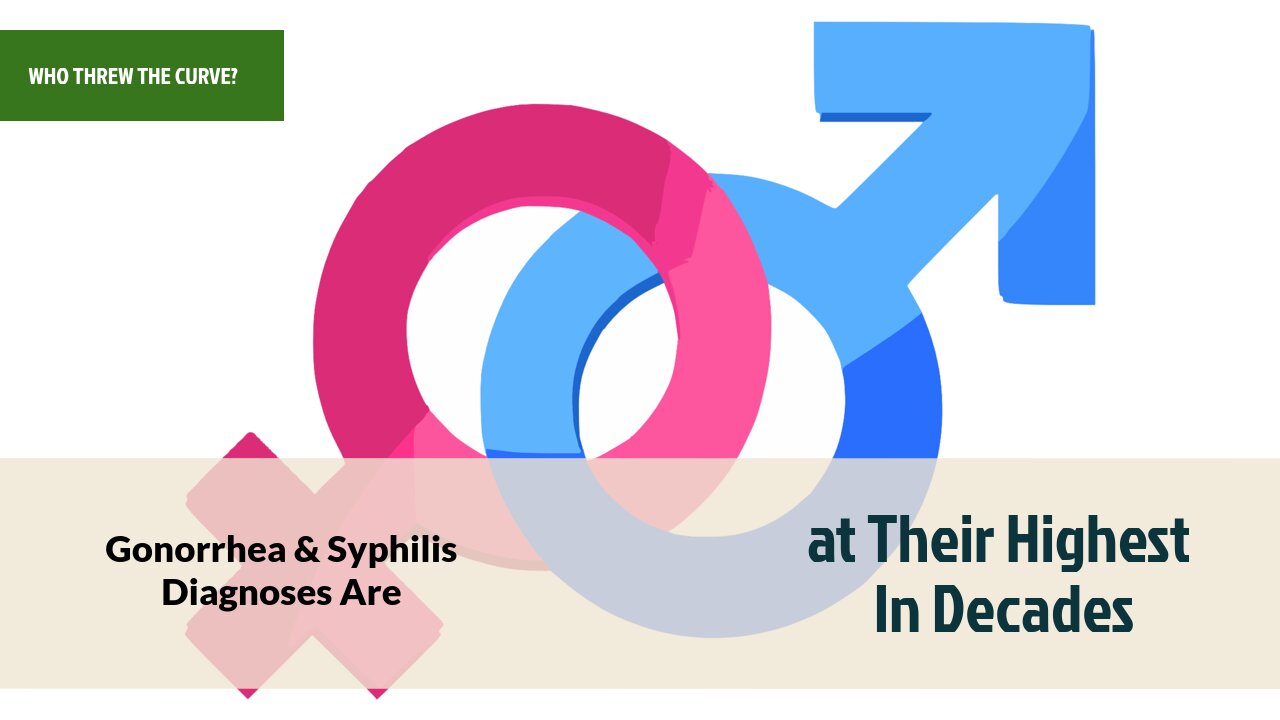Premium Only Content

Gonorrhea And Syphilis Diagnoses Are at Their Highest In Decades
Factors Contributing to the Surge of Gonorrhea and Syphilis Cases
We will explore the factors contributing to the alarming increase in the cases of gonorrhea and syphilis. Through a comprehensive analysis of various socio-cultural, behavioral, and healthcare-related aspects, this paper aims to shed light on the reasons behind this surge and the potential strategies to curb the spread of these sexually transmitted infections (STIs). The findings suggest that a combination of factors, including changes in sexual behavior, inadequate healthcare access, evolving antibiotic resistance, and societal stigma, contribute to the high prevalence of gonorrhea and syphilis. Understanding these factors is crucial for developing effective prevention and control measures.
Gonorrhea and syphilis, two sexually transmitted infections (STIs) that have plagued human populations for centuries, are currently experiencing a resurgence in many parts of the world. This essay aims to delve into the factors that contribute to the highest recorded cases of gonorrhea and syphilis. By understanding these factors, we can develop targeted interventions to mitigate the spread of these infections and promote sexual health.
I. Changes in Sexual Behavior:
One significant factor contributing to the surge in gonorrhea and syphilis cases is the shift in sexual behavior patterns. Factors such as a decline in condom use, an increase in multiple sexual partners, and the rise of online dating applications have contributed to a higher risk of STI transmission. This section explores the impact of these behavioral changes on the escalating cases of gonorrhea and syphilis.
II. Inadequate Healthcare Access:
Limited access to comprehensive sexual health services, including routine STI screening and affordable treatment, plays a vital role in the persistence of gonorrhea and syphilis. This section examines the socio-economic barriers, such as lack of healthcare infrastructure, insufficient funding, and stigma surrounding STIs, that hinder access to essential healthcare services. Additionally, the essay discusses the importance of comprehensive sexual education and awareness campaigns to address the lack of knowledge about STIs.
III. Evolving Antibiotic Resistance:
The emergence and spread of antibiotic-resistant strains of gonorrhea and syphilis pose a significant challenge in treating these infections. This section explores the factors contributing to the development of antibiotic resistance, including inappropriate antibiotic use, inadequate surveillance systems, and the lack of research and development of alternative treatment options. The essay emphasizes the need for novel therapeutic approaches and robust surveillance systems to combat drug resistance.
IV. Societal Stigma:
Societal stigma surrounding STIs, including gonorrhea and syphilis, often leads to underreporting and delayed diagnosis, facilitating the spread of these infections. This section explores the negative consequences of stigma, such as discrimination, fear, and reluctance to seek testing and treatment. It highlights the importance of reducing stigma through education, awareness campaigns, and fostering a supportive and inclusive society.
The surge in gonorrhea and syphilis cases can be attributed to a combination of factors, including changes in sexual behavior, inadequate healthcare access, evolving antibiotic resistance, and societal stigma. Addressing these factors requires a multi-faceted approach that encompasses comprehensive sexual education, accessible healthcare services, targeted prevention strategies, and collaborative efforts between healthcare providers, policymakers, and communities. By addressing these challenges head-on, we can
-
 1:35:04
1:35:04
Winston Marshall
2 days ago“This Wasn’t Accidental!” Maajid Nawaz SPEAKS OUT on R*PE Gangs and The REAL Cover-Up
16.3K29 -
 23:46
23:46
barstoolsports
2 hours agoSurviving Barstool Drama Spills Over Into The Office | Stool Scenes
18.6K2 -
 LIVE
LIVE
Shield_PR_Gaming
4 hours ago01/18/25. Let's chill with MMORPG and then some shooters!! Read Description! You know you want to!!
492 watching -
 1:09:39
1:09:39
Tactical Advisor
3 hours agoTrump Inauguration & New Gun Releases | Vault Room Live Stream 014
18.4K1 -
 11:27
11:27
Adam Does Movies
15 hours ago $5.63 earnedWolf Man Movie Review - Does It Bite?
45K9 -
 11:57
11:57
inspirePlay
19 hours ago $8.18 earnedLongest Drive Wins! Elite Long Drivers Battle in Par 4 Elimination
65.8K12 -
 8:44
8:44
RTT: Guns & Gear
21 hours ago $5.13 earnedStreamlight TLR RM2 Laser - G | The Best PCC Light
51.8K4 -
 36:38
36:38
Athlete & Artist Show
1 month ago $3.11 earnedNCAA Hockey Was A Joke, TNT Hockey Panel Is The Best In Sports
40.5K2 -
 1:00:08
1:00:08
Trumpet Daily
1 day ago $5.93 earnedBanning Mystery of the Ages - Trumpet Daily | Jan. 17, 2025
27K35 -
 15:10
15:10
Chris From The 740
1 day ago $3.49 earnedEAA Girsan Disruptor X 500-Round Review: Is It Reliable?
43.8K4